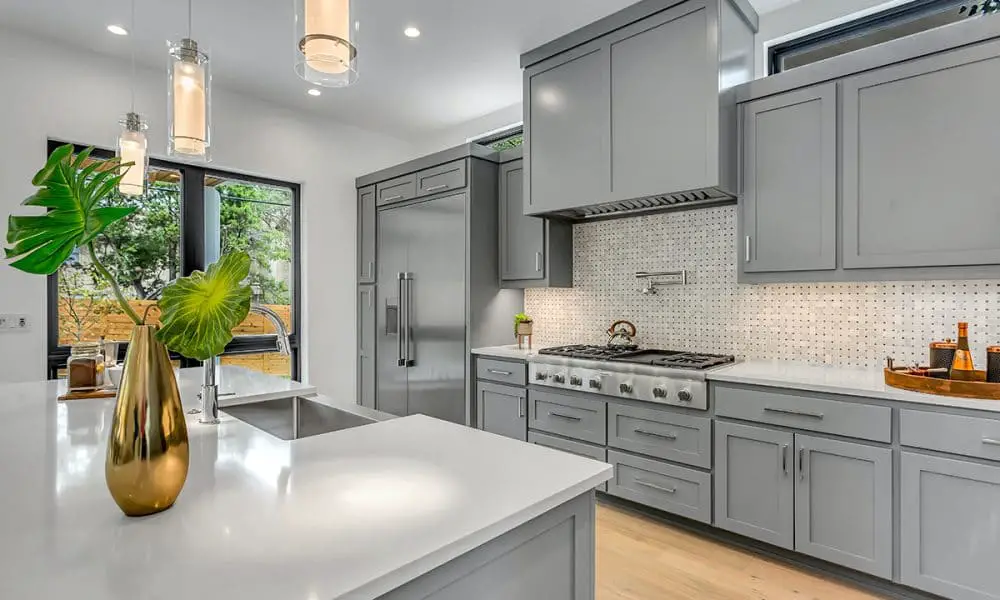Introduction to Nude Kitchens
In recent years, nude kitchens have surged in popularity, becoming a favored choice for homeowners and designers alike. Characterized by their minimalist and natural aesthetics, these kitchens emphasize simplicity, functionality, and a connection to nature. In this comprehensive guide, we delve into the allure of nude kitchens, exploring their defining features, benefits, and design tips to help you create your own serene and stylish culinary space.
What is a Nude Kitchen?
A nude kitchen embodies a design philosophy that prioritizes natural materials, neutral color palettes, and a clutter-free environment. The term “nude” refers to the use of earthy tones and organic textures that create a warm and inviting atmosphere. This design style often features materials such as wood, stone, and metal, combined with sleek, modern lines and minimalistic elements.
Benefits of Nude Kitchens
Timeless Elegance
Nude kitchens boast a timeless appeal that transcends fleeting trends. The neutral color schemes and natural materials ensure that your kitchen remains stylish and relevant for years to come. This timelessness not only enhances the aesthetic value of your home but also increases its resale potential.
Versatility
One of the key advantages of a nude kitchen is its versatility. The neutral base allows for easy customization and accessorizing. Whether you prefer a rustic farmhouse look or a sleek, modern design, a nude kitchen can be adapted to suit various styles and preferences.
Enhanced Sense of Space
The minimalist approach of nude kitchens creates an illusion of a larger space. By reducing visual clutter and emphasizing clean lines, these kitchens appear more open and airy, making them ideal for both small and large spaces.
Connection to Nature
Incorporating natural materials and earthy tones fosters a sense of connection to nature. This not only enhances the aesthetic appeal but also promotes a calming and soothing environment, making the kitchen a pleasant space for cooking and socializing.
Design Elements of a Nude Kitchen
Neutral Color Palette
The cornerstone of a nude kitchen is its neutral color palette. Shades of beige, cream, taupe, and gray dominate the scene, creating a harmonious and cohesive look. These colors provide a versatile backdrop that complements various design elements and accessories.
Natural Materials
Wood, stone, and metal are the primary materials used in nude kitchens. Wooden cabinetry, stone countertops, and metal fixtures add texture and depth to the space. These materials not only enhance the visual appeal but also ensure durability and longevity.
Minimalistic Layout
A minimalistic layout is essential to achieving the nude kitchen aesthetic. This involves streamlined cabinetry, integrated appliances, and unobtrusive storage solutions. The goal is to maintain a clean and clutter-free environment that emphasizes simplicity and functionality.
Open Shelving
Open shelving is a popular feature in nude kitchens, offering both practical and aesthetic benefits. It provides easy access to everyday items while showcasing stylish dishware and decorative pieces. To maintain the minimalistic look, it’s important to keep the shelves organized and free of excessive clutter.
Subtle Accents
While the overall design of a nude kitchen is understated, subtle accents can add character and interest. Think of brushed metal hardware, textured backsplashes, and strategically placed greenery. These elements enhance the visual appeal without overpowering the serene aesthetic.
Creating a Nude Kitchen: Step-by-Step Guide
Step 1: Choose Your Color Palette
Start by selecting a neutral color palette that complements your overall home design. Consider shades that evoke warmth and tranquility, such as soft beige, warm taupe, or muted gray. Use these colors as the foundation for your cabinetry, walls, and flooring.
Step 2: Select Natural Materials
Invest in high-quality natural materials that add texture and durability to your kitchen. Opt for wooden cabinets in light or medium tones, stone countertops with subtle veining, and metal fixtures in matte or brushed finishes. These materials will enhance the nude aesthetic while providing a robust and functional space.
Step 3: Plan a Minimalistic Layout
Design a layout that maximizes efficiency and minimizes clutter. Incorporate integrated appliances, concealed storage solutions, and sleek cabinetry to maintain a streamlined look. Ensure that your kitchen island, if you have one, is free of unnecessary items and serves as both a functional and aesthetic focal point.
Step 4: Incorporate Open Shelving
Add open shelving to your kitchen design to display your most-used items and decorative pieces. Choose shelves made of wood or metal that complement your overall design. Keep the items on display minimal and organized to maintain the clean and open feel.
Step 5: Add Subtle Accents
Enhance your nude kitchen with subtle accents that add interest and personality. Consider installing a textured backsplash in a neutral tone, incorporating plants for a touch of greenery, or using brushed metal hardware for a refined finish. These accents should enhance the overall aesthetic without detracting from the minimalistic vibe.
Maintaining Your Nude Kitchen
Regular Cleaning
Maintaining the pristine look of your nude kitchen requires regular cleaning. Wipe down surfaces daily to prevent the buildup of dust and grime. Use gentle, non-abrasive cleaners to preserve the integrity of your natural materials.
Organized Storage
Keep your kitchen organized by regularly decluttering and rearranging items. Utilize drawer dividers, pantry organizers, and storage baskets to keep everything in its place. An organized kitchen not only looks better but also enhances functionality.
Mindful Decorating
When adding new decorative elements to your kitchen, choose items that align with the nude aesthetic. Opt for neutral-toned dishware, simple cookware, and understated decor pieces. Avoid over-accessorizing to maintain the clean and minimalistic look.
Conclusion
A nude kitchen is more than just a design trend; it’s a timeless and versatile approach to creating a serene and stylish culinary space. By focusing on natural materials, neutral color palettes, and minimalistic layouts, you can achieve a kitchen that is both functional and aesthetically pleasing. Follow our step-by-step guide to create your own nude kitchen and enjoy the benefits of this elegant and calming design.


